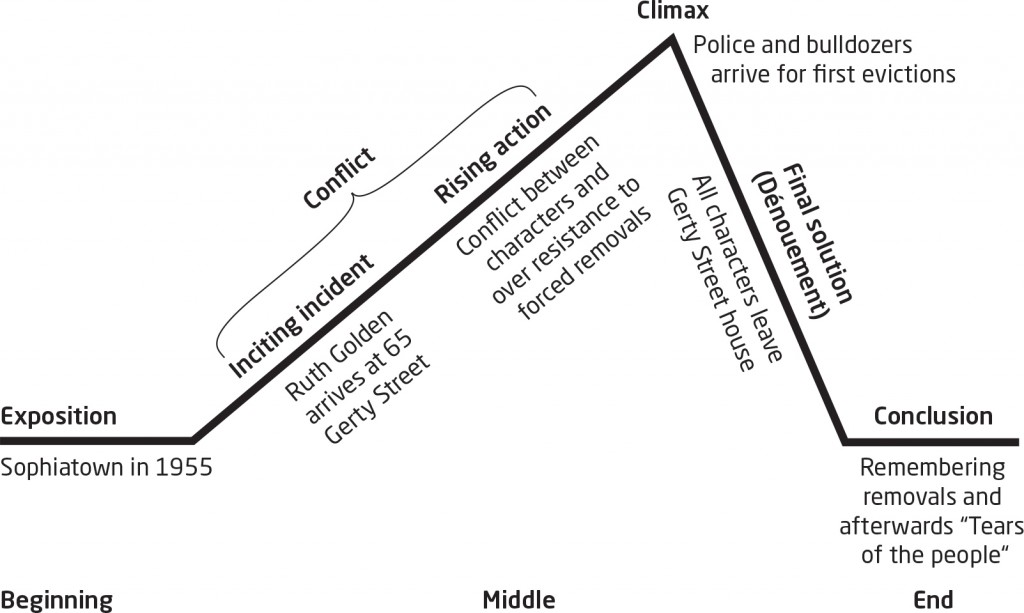Struggling with your prescribed literature?
Our Literature Study Guides provide insights and analysis of themes and characters and includes guidelines for writing your exam.
A plot structure, also called a dramatic structure is the overall design or structure of a story and how the story elements are arranged.
To help you analyse the plot, it is important to understand what the structural elements of the plot are.
Every story has a beginning or exposition, with something that leads to conflict in the middle, before it is resolved and the story concludes.
To help you understand the plot structure, here is a graph that illustrates the structural elements of Sophiatown.

Now let us look at the definitions of each element to understand what they mean.
| Exposition |
The exposition is the explanation (usually at the beginning of a story) of the events leading up to the start of the plot.
|
| Inciting incident |
The first time we realise that all is not well. Something that sets off the conflict in the story.
|
| Rising action |
The building up of conflict in the plot.
|
| Conflict |
The struggle between characters, or between individuals and their circumstances.
|
| Climax |
The highest point in the development of the conflict, the moment of greatest intensity and tension.
|
| Final solution (dénouement) |
The final part of the story where everything is made clear.
|
| Conclusion | The way the story is rounded off. |
The X-kit Achieve study timetable template can be printed out and used to plan your study time...
